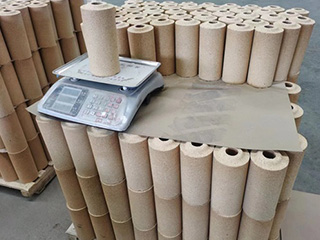The steel industry is a vital sector of the global economy, producing a wide range of products for construction, manufacturing, and infrastructure development. Steelmaking processes involve extremely high temperatures and harsh conditions, which require specialized materials to withstand them. One such material is high alumina brick, which is the preferred refractory material for the steel industry. In this article, we will explore the reasons why high alumina brick is the preferred refractory material for the steel industry.
What is High Alumina Brick?
High alumina brick is a type of refractory material that is made from high purity alumina and other raw materials, such as clay or silica. It is known for its excellent high temperature resistance, chemical resistance, and mechanical strength. High alumina brick is commonly used in the steel industry for lining furnaces, kilns, and other high-temperature equipment.

Reasons Why High Alumina Brick is Preferred in the Steel Industry
1. High Temperature Resistance
High alumina brick is known for its excellent high temperature resistance, making it an ideal choice for use in steelmaking processes. It can withstand temperatures up to 1800°C, which is much higher than other types of refractory materials.
In the steel industry, high alumina brick is used to line furnaces, ladles, and tundishes, where it is exposed to extremely high temperatures. The high temperature resistance of high alumina brick helps to maintain a consistent temperature in the furnace, which is essential for producing high-quality steel.
2. Chemical Resistance
High alumina brick is highly resistant to chemical corrosion, which is another reason why it is preferred in the steel industry. Steelmaking processes involve the use of various chemicals, such as slag and molten metal, which can be highly corrosive.
High alumina brick is able to resist corrosion from these chemicals, ensuring that the lining of the furnace or kiln remains intact and does not break down over time. This helps to prevent equipment failure and reduce maintenance costs.
3. Mechanical Strength
In addition to its high temperature and chemical resistance, high alumina brick is also known for its mechanical strength. It has a high compressive strength, which means that it can withstand the stresses of high temperatures and thermal shock without cracking or breaking.
This mechanical strength is essential in the steel industry, where equipment is subjected to extreme conditions that can cause damage over time. High alumina brick helps to ensure that the lining of the furnace or kiln remains intact, even under the most demanding conditions.
4. Versatility
High alumina brick is a versatile material that can be used in a wide range of applications in the steel industry. It can be used to line different types of furnaces, such as blast furnaces, electric arc furnaces, and ladle furnaces. It can also be used to line tundishes, which are used to transport molten steel from the furnace to the casting machine.
The versatility of high alumina brick makes it an ideal choice for steelmaking processes, where different types of equipment are used to produce different types of steel products.
5. Cost-Effective
Despite its high performance and durability, high alumina brick is also a cost-effective refractory material. It has a long lifespan and requires minimal maintenance, which helps to reduce the overall cost of steel production.
Furthermore, high alumina brick can be recycled and reused, which helps to reduce waste and conserve resources. This makes it an environmentally sustainable choice for the steel industry.
Conclusion
High alumina brick is the preferred refractory material for the steel industry, due to its high temperature resistance, chemical resistance, mechanical strength, versatility, and cost-effectiveness. In the steel industry, it is used to line furnaces, kilns, and other high-temperature equipment, where it helps to maintain a consistent temperature, resist chemical corrosion, withstand mechanical stresses, and reduce maintenance costs.
As the demand for steel continues to grow worldwide, the steel industry is facing increasing pressure to reduce costs, improve efficiency, and minimize environmental impact. High alumina brick can help to address these challenges by providing a reliable and cost-effective solution for high-temperature equipment.
Furthermore, ongoing research and development in the field of refractory materials are leading to the development of new types of high alumina brick with even better performance characteristics. These new materials are expected to further improve the efficiency and sustainability of steel production, while also reducing costs and improving product quality.
In conclusion, high alumina brick is a critical component of the steel industry, providing high performance and durability in demanding conditions. Its ability to withstand high temperatures, resist chemical corrosion, and maintain mechanical strength make it the preferred refractory material for the steel industry. As the steel industry continues to evolve and face new challenges, high alumina brick is expected to remain a key material for ensuring the efficiency, sustainability, and competitiveness of steel production.
Contact: Mgr. Han
Phone: 0086-13589497465
Email: 1255953279@qq.com
Add: Industrial Area of Lingzi Town,Zichuan District,Zibo City, Shandong,China